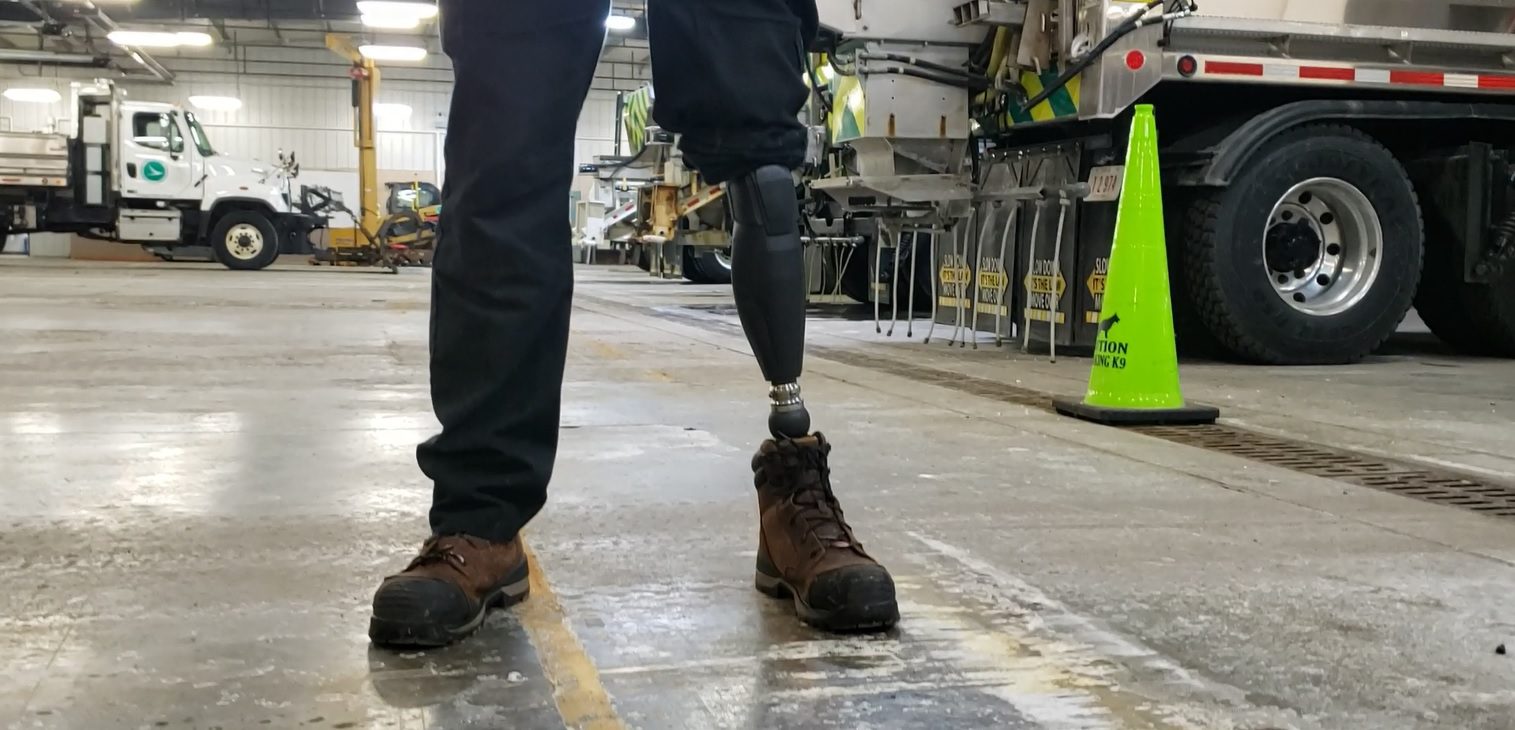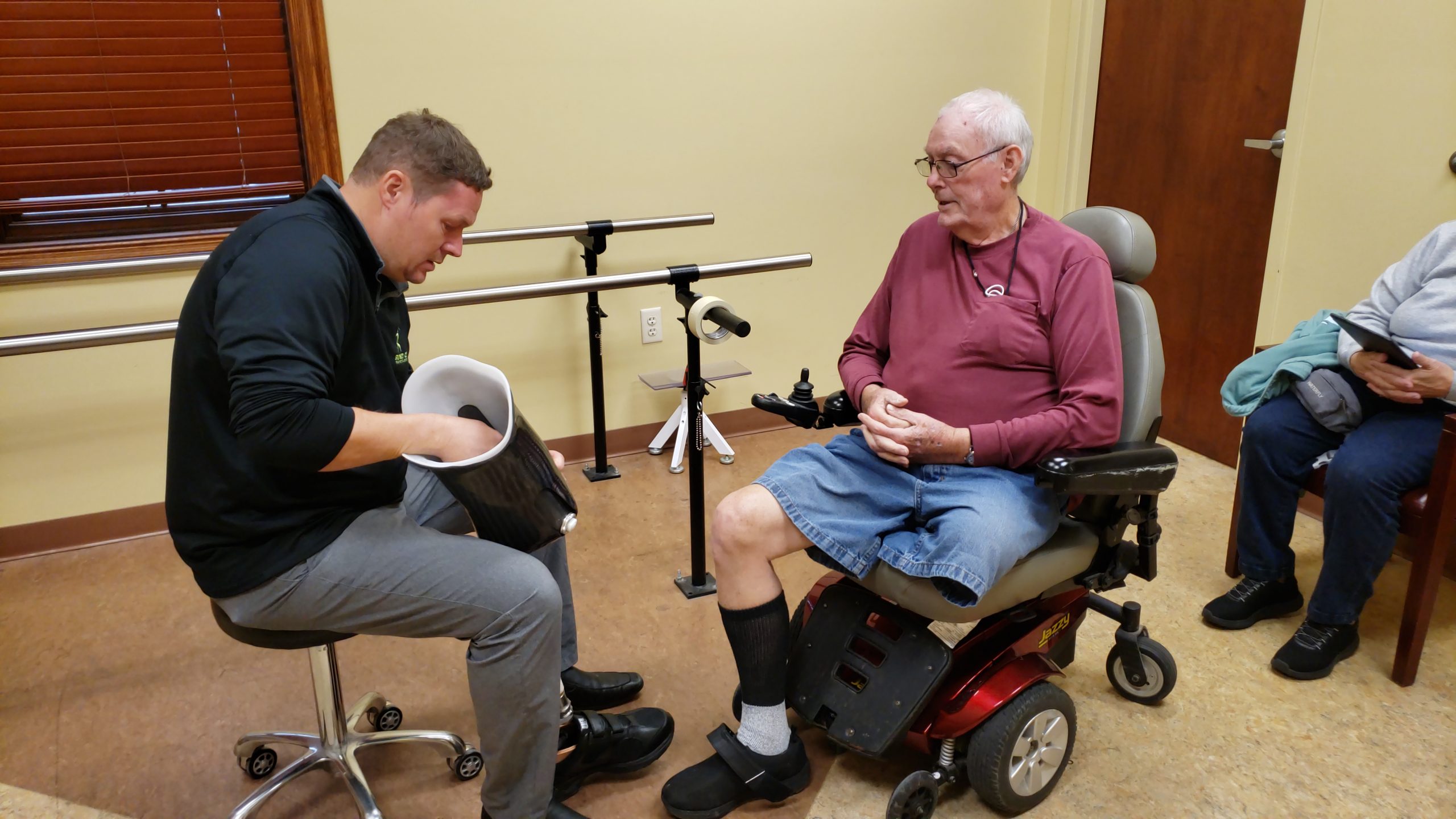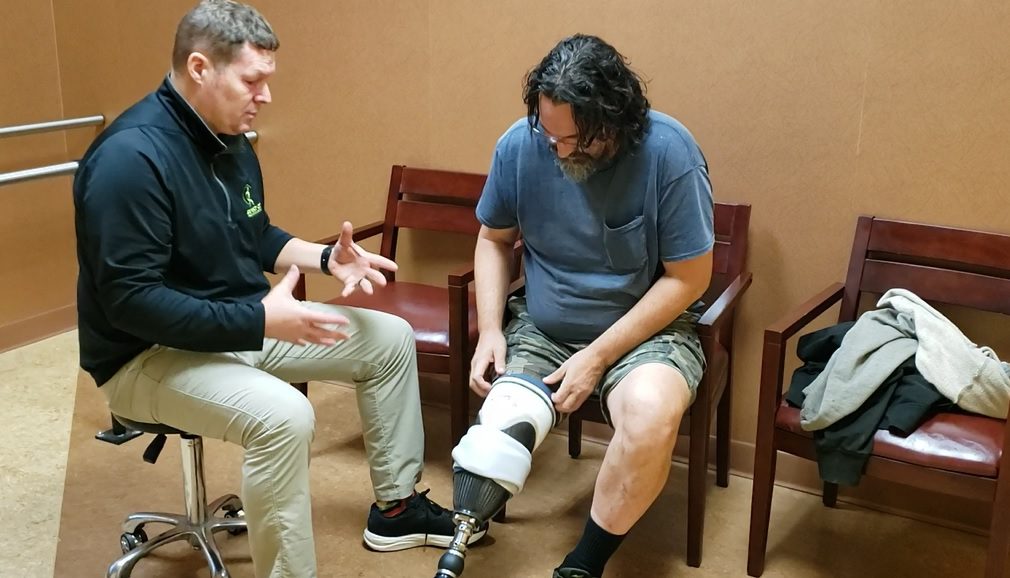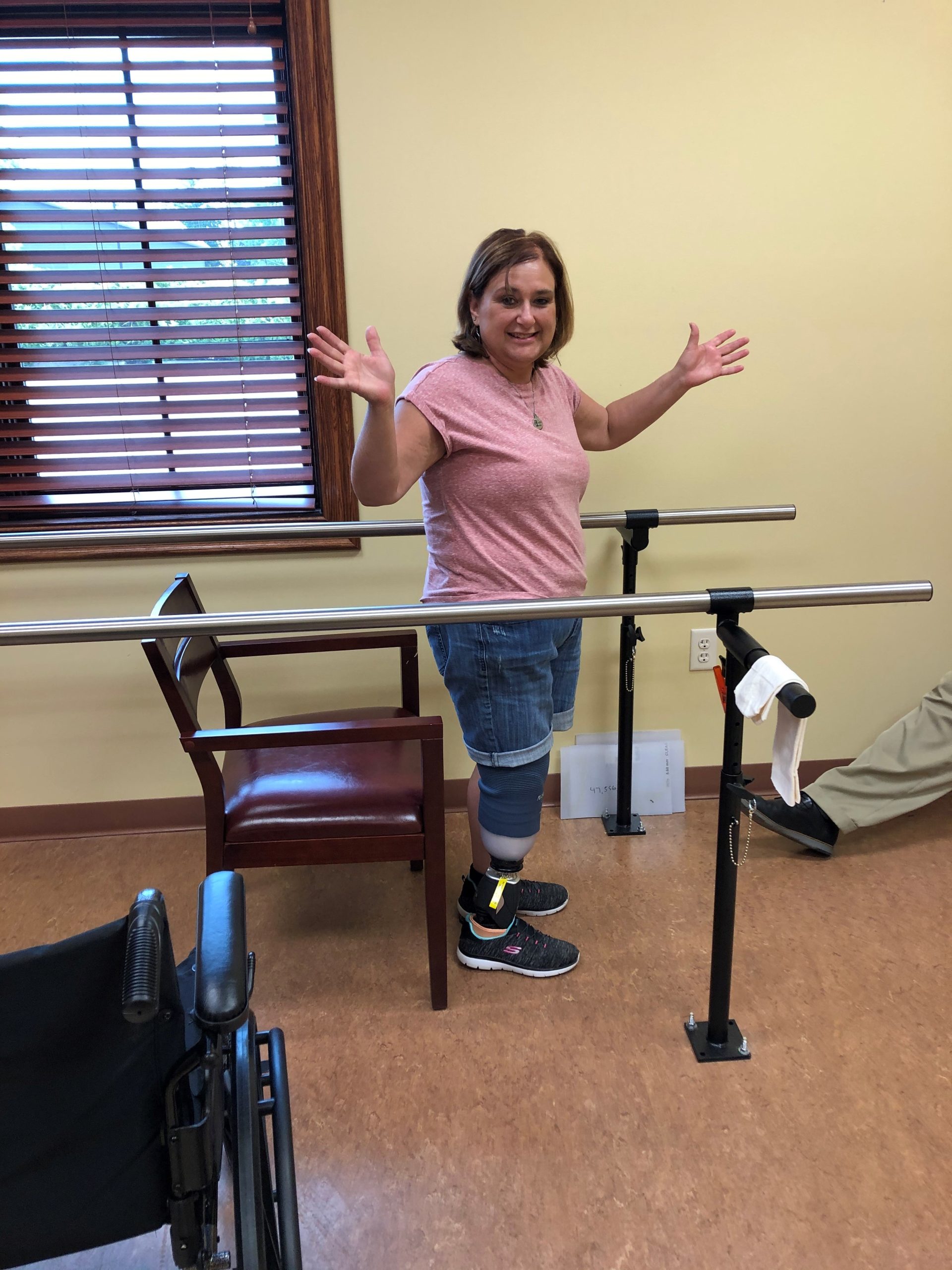Consultation:
A member of the Summit City family will meet with you either before or immediately after your surgery and answer any questions you may have about the overall process. Consultations are completely free of charge and can also take place in our office or at medical facilities such as rehabilitation clinics or nursing homes. You will be provided contact information for our office as we want to be readily available for the questions that arise throughout your journey. We pride ourselves on discussing the process with your family members and friends as amputation affects more than just the amputee. You are never alone, and we are always available to help.




